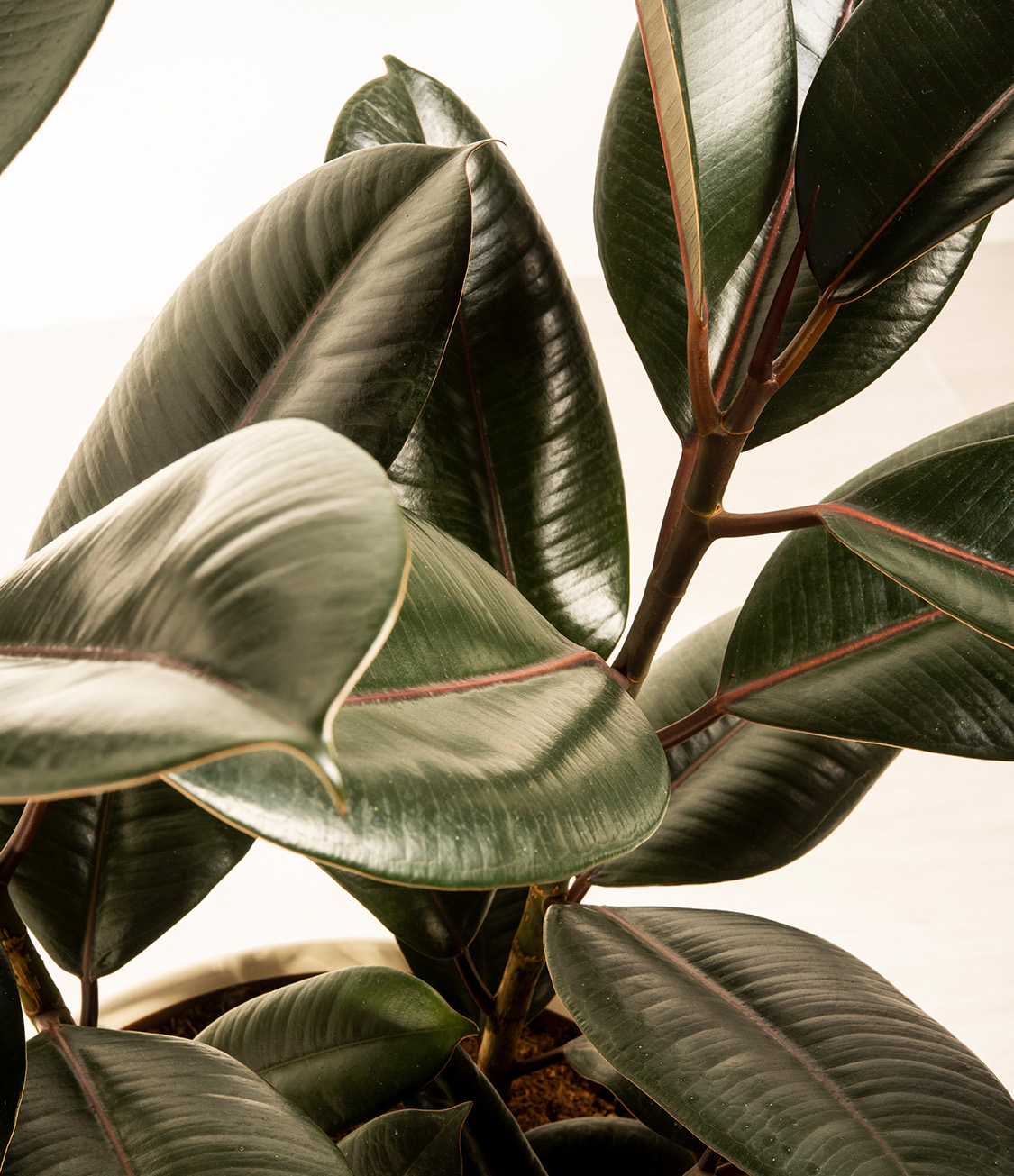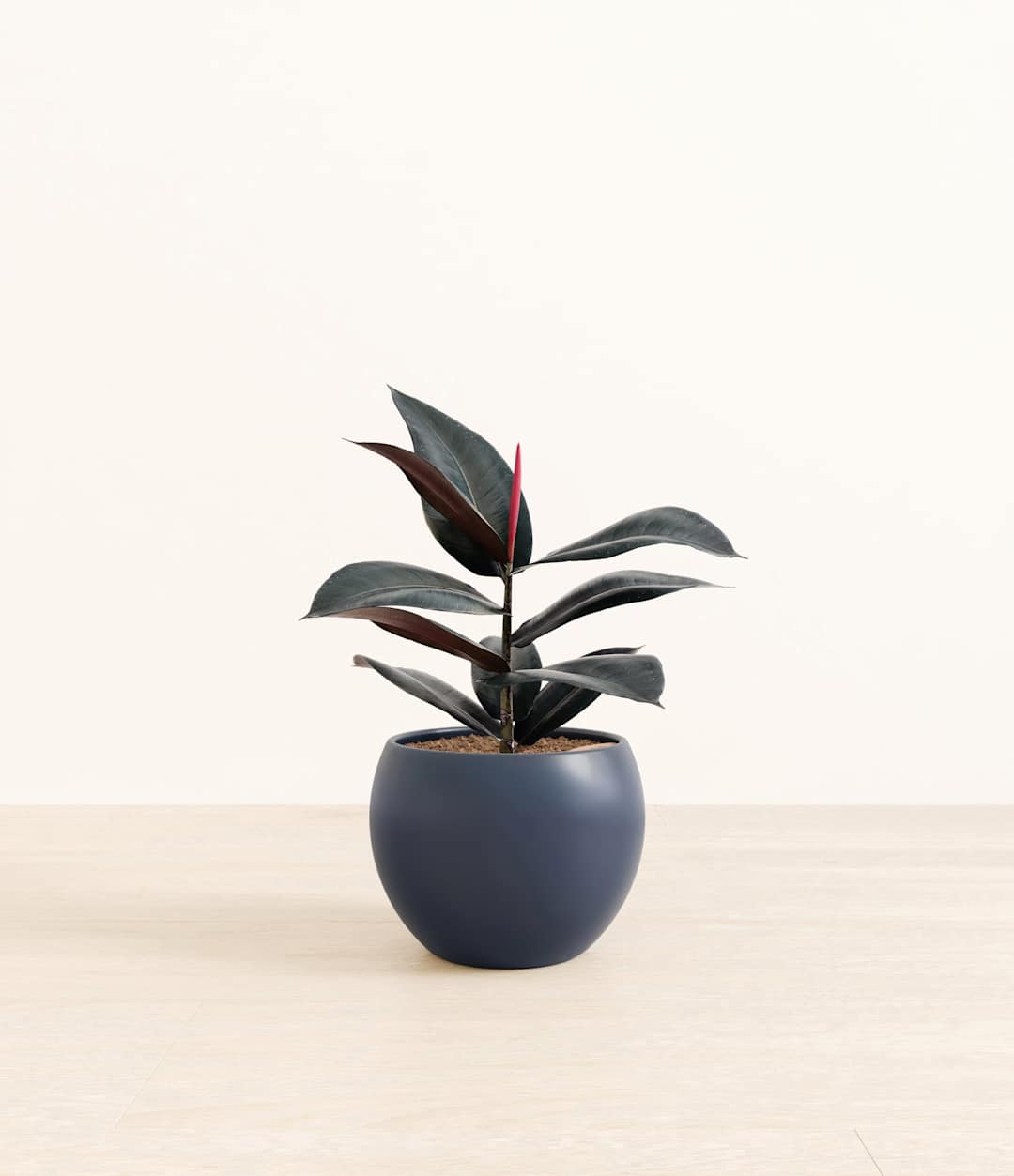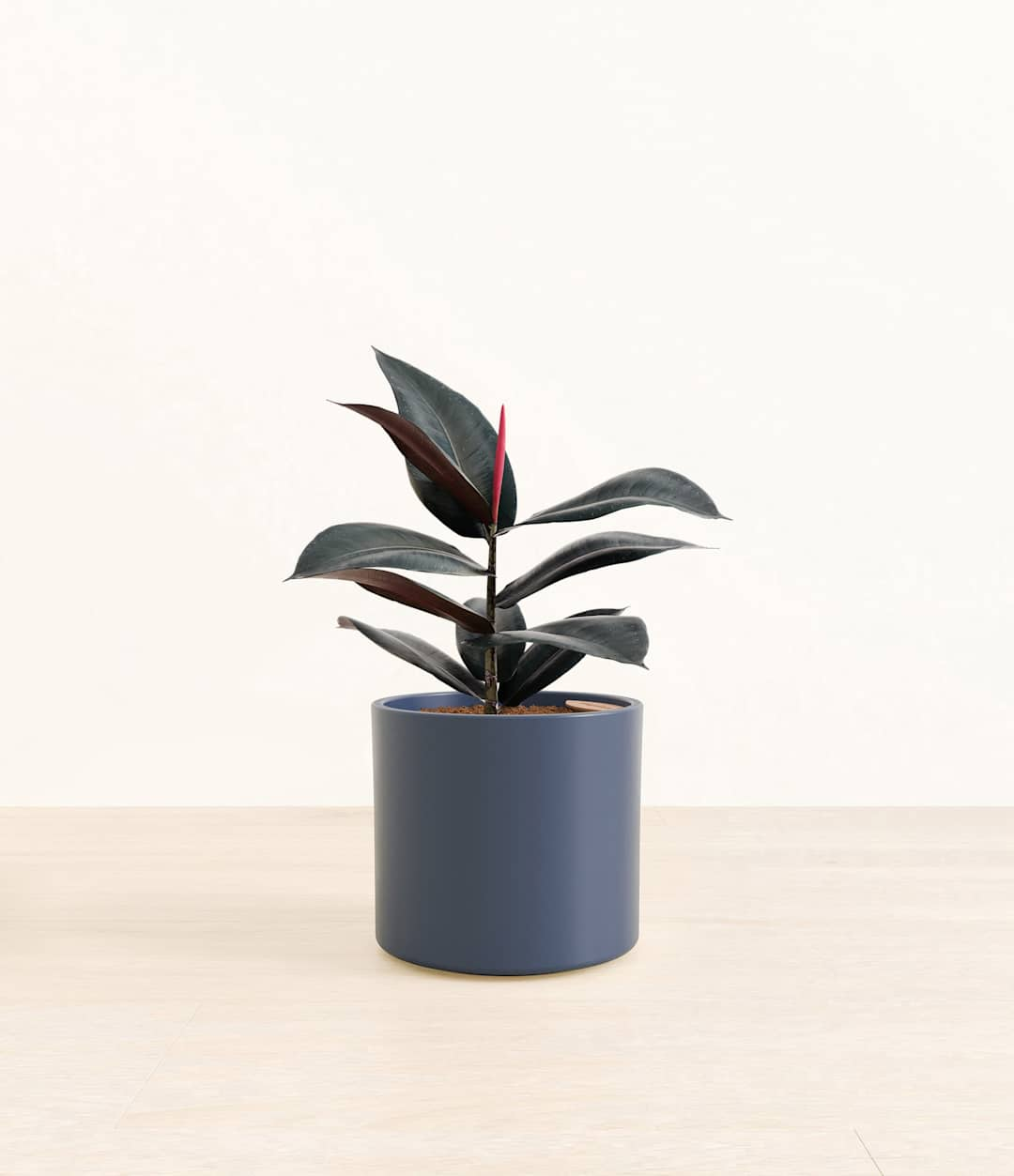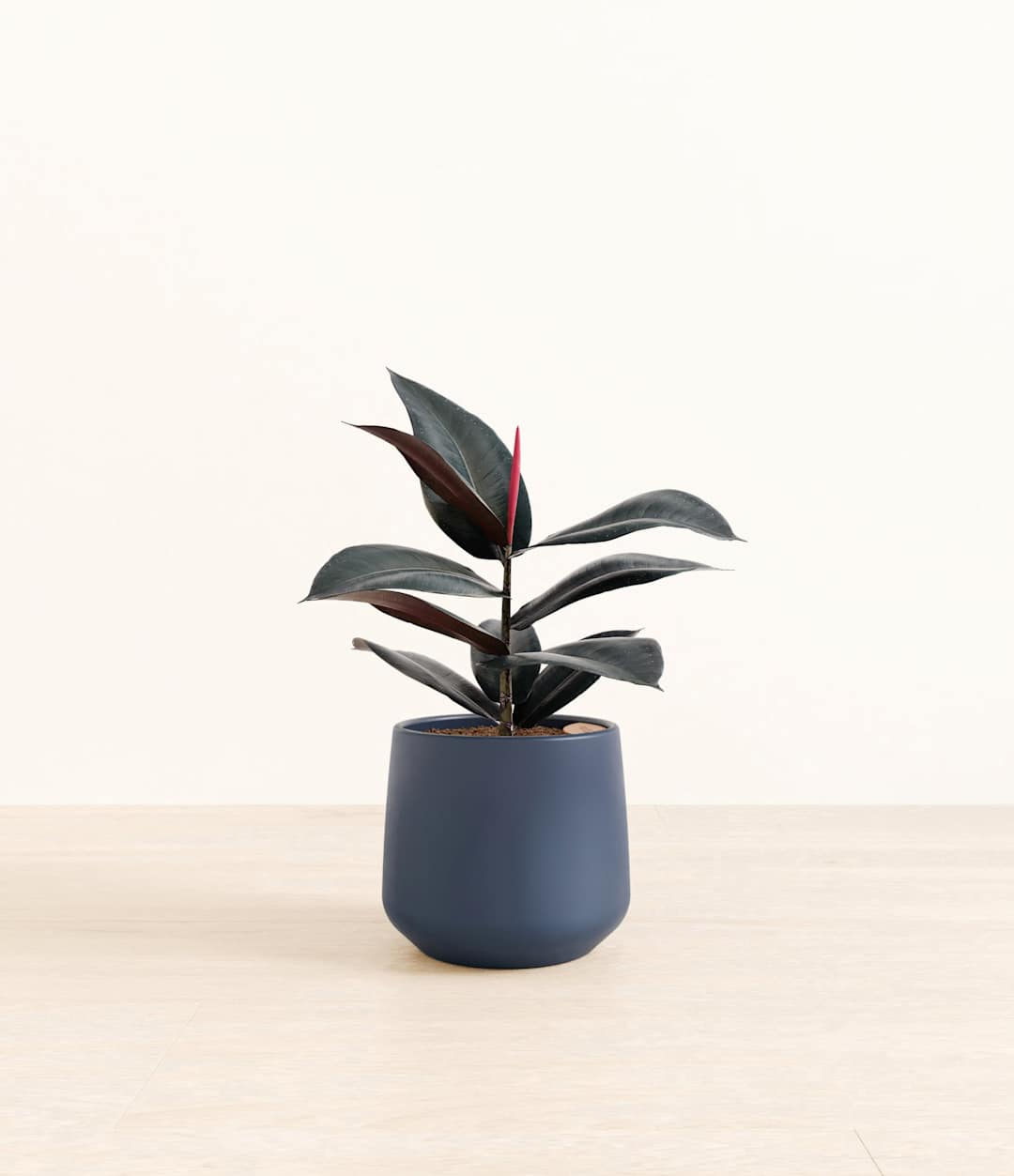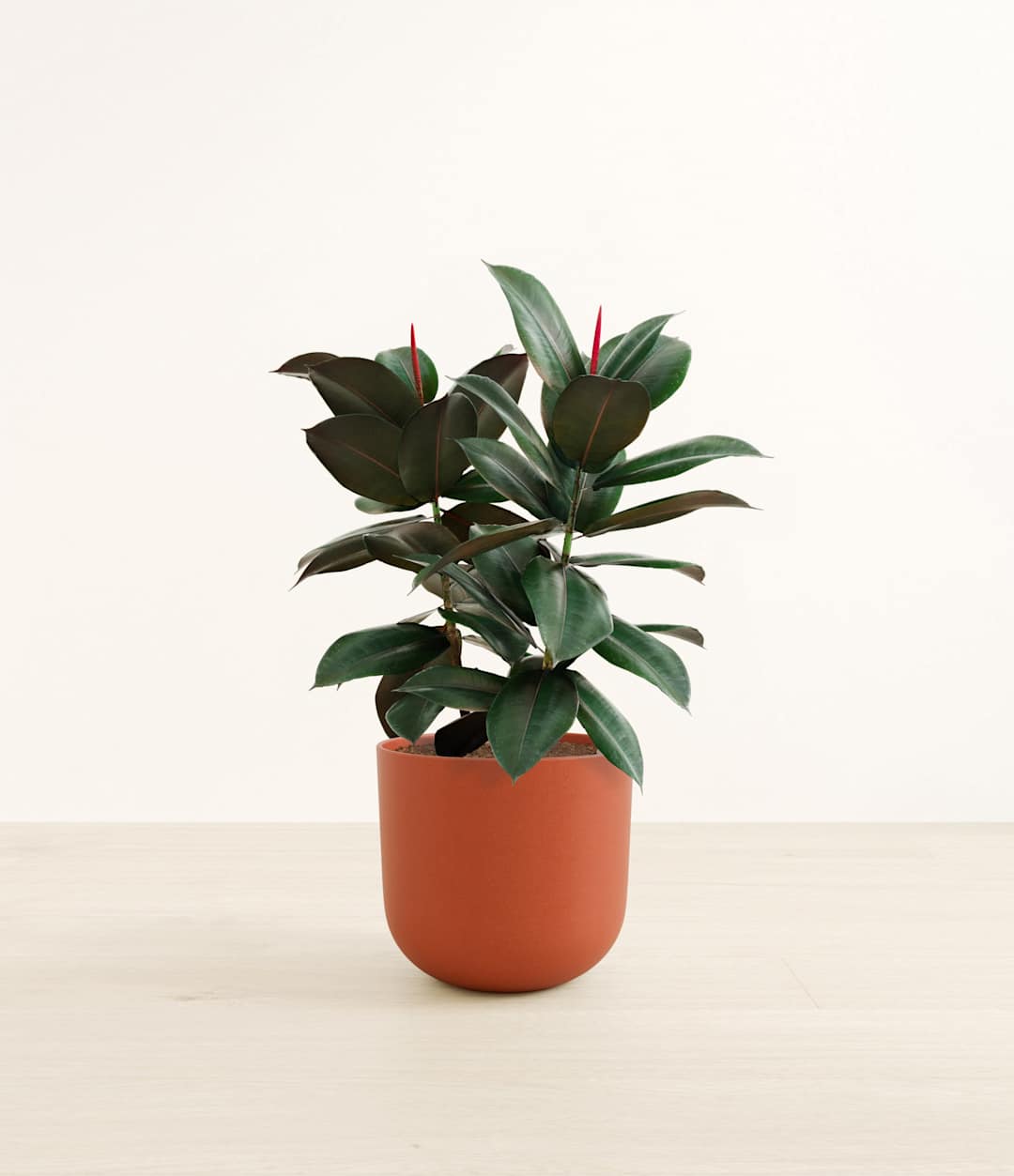How to Care for a Rubber Plant
Shop this plantAbout Rubber plant
Native to Southeast Asia, the tropical Rubber Plant, also known as Ficus Elastica, thrives in warmth and sunlight. In Feng Shui, its round-shaped leaves are believed to soften a space and bring good fortune and wealth. Historically, its milky white sap was used by ancient civilisations to produce rubber. With its impressive size and natural ability to purify the air of common household toxins, the Rubber Plant is a perfect indoor plant, loved for its ease of growing.
Other common names
- Rubber Tree
- Rubber Tree
- Rubber Tree
- Rubber Tree
- Rubber Tree
- Rubber Tree
How often should I water a Rubber Plant?
The frequency of watering your Rubber Plant will change with the seasons. Spring and summer are the main growing periods, so plants may need more frequent watering. In winter, plants conserve energy and slow their growth, meaning less water is required. With easyplant’s self-watering system, caring for your Rubber Plant is effortless. Simply check the easyplant reservoir once a month and top it up when it’s empty!
Rubber Plant Light Needs
The Rubber Plant thrives in bright, direct light where sunlight streams in, but it can also adapt to bright, indirect light where the sun’s rays are diffused. Avoid placing it in low-light areas or spaces without natural light.
Lighting affects this plant in different ways. With consistent light, your Rubber Plant will develop a rich burgundy shade. In lower light, the leaves may fade to a lighter green and grow larger. The best locations for a Rubber Plant are on a windowsill or near a south-facing window. If that’s not an option, west-facing is the next best choice. East-facing windows receive morning sun, but it’s weaker compared to west-facing light.
Rubber Plant Care
During its first few days at home, your Rubber Plant will be extra sensitive and may shed a few leaves. You can let them fall naturally or trim them – no need to worry, as new leaves will soon take their place. To help it adjust, avoid moving the pot too often and allow it to settle in one spot. To promote healthy growth, dust the leaves occasionally and rotate the pot a quarter turn once a month. If you want to control its shape and height, prune it as needed.
How Big Do Rubber Plants Grow?
The Rubber Plant is loved for its ability to grow to impressive heights within just a few years. While there are different variations, including Ficus Burgundy, their growth patterns are similar. The broad, thick, leathery leaves typically grow to around 30 cm long and 12 cm wide. Ficus Burgundy leaves, which have a darker green colour with red mid-veins, grow to around 30 cm long and 10 cm wide.
Indoors, a standard Rubber Plant can grow between 60 cm and 3 metres tall, while in its natural habitat, it can reach up to 15 metres. Ficus Burgundy, a variant of the Rubber Plant, can grow to around 3 metres tall as a houseplant and 12 metres outdoors. Expect around 60 cm of new growth each year indoors. It takes about five years for a Rubber Plant to fully mature. Factors such as lighting, watering schedule, temperature, and humidity all play a role in its growth.
Temperature & Humidity
The ideal temperature range for a Rubber Plant is between 18-30°C. As a tropical plant, it prefers warmth, so try not to let temperatures drop below 15°C, as this can stunt growth and lead to leaf damage. Ficus Elastica adapts well to typical indoor humidity levels, but if the air is particularly dry, consider grouping it with other plants or using a pebble tray.
Are Rubber Plants Toxic to Pets and Children?
While many houseplants bring beauty to a space, some can be harmful if touched or ingested. Rubber Plants may be moderately toxic if eaten, so keep them away from curious children and pets. Symptoms of ingestion include mouth numbness, vomiting, and diarrhoea. Cats and dogs are affected in similar ways.
The plant’s sap contains latex, a compound found in many manufactured products. Some people have latex allergies and may experience skin irritation, from mild dermatitis to more severe reactions. In rare cases, latex exposure can cause blistering, burning, or anaphylactic shock. Despite this, Rubber Plants are classified as Class 4 in toxicity – the mildest classification.
Troubleshooting Common Problems with Rubber Plants
Caring for a plant means keeping an eye on how it’s adapting to its environment and making adjustments when needed. Every houseplant has signs that indicate when something isn’t right. When introducing a new Rubber Plant, allow a two-week adjustment period. If the leaves start losing their shine, move the plant to a brighter spot. If your Rubber Plant is growing too large, wait until it reaches the desired height before pruning the top – once the top is cut, it will only grow outwards. If you notice leaves dropping, check the soil. If it’s too wet, reduce the watering frequency.
Frequently Asked Questions about Rubber Tree Plant
- Do Rubber plants actually make rubber?
Yes, Rubber plants produce low-grade rubber. Natural rubber comes from latex, which is found in the sap of the Rubber plant. The latex is extracted through a process called rubber tapping.
- How toxic are Rubber plants?
Rubber plants are classified as Class 4 on the toxicity scale, meaning they are mildly toxic. However, they should never be ingested, so it’s best to keep them out of reach of children and pets. If the sap comes into contact with the skin, wash it off immediately. Those with a known latex allergy should take extra care.
- What is a Rubber plant good for?
Rubber plants have many benefits. They help purify indoor air, particularly by filtering out formaldehyde. They also produce oxygen, are hypoallergenic, and have anti-inflammatory properties. Historically, their milky white sap was used to produce rubber. In Feng Shui, they are believed to bring good fortune and wealth. With their thick, deep green, leathery leaves, Rubber plants make a striking addition to any room.
